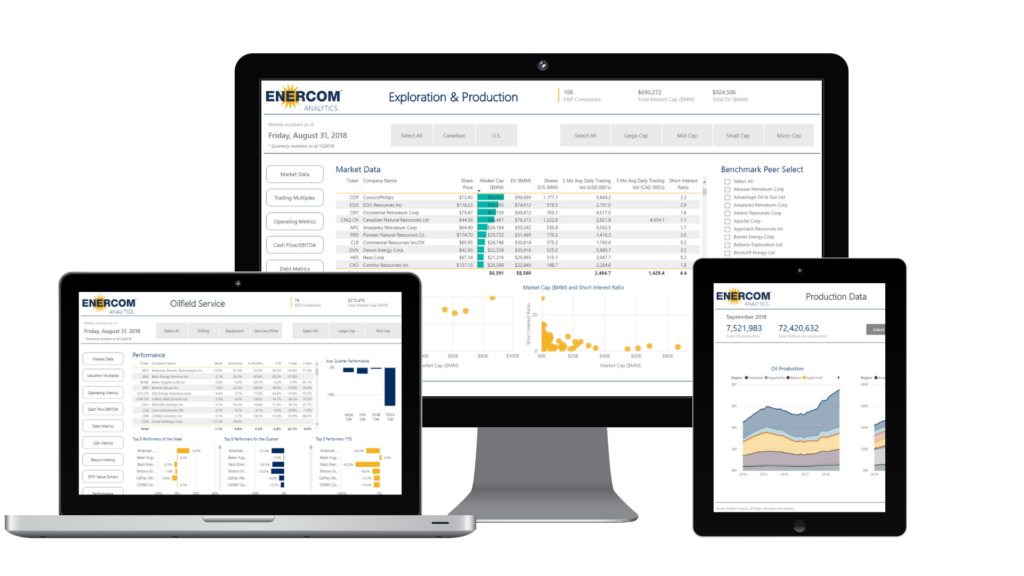The impact of natural gas is making its mark on the transportation industry. OAG360 covered a recent $68 million investment by the United Parcel Service (ticker: UPS) for its liquefied natural gas (LNG) vehicles in 2013. Now, the railroad industry is embracing the idea.
On March 6, 2013, BNSF, one of North America’s leading freight transportation companies, announced it will begin testing LNG-fueled locomotives later in the year. The company has been working with two locomotive manufacturers, GE (ticker: GE) and Caterpillar (ticker: CAT), to develop the natural gas engine technology that will be used in the pilot unit.
Union Pacific Corp. (ticker: UNP) and Norfolk Southern (ticker: NSC) Corp. are two other industry staples currently open to the alternative fuel method.
Lorenzo Simonelli, CEO of GE’s transportation unit, said: “We are entering a new era where natural gas will be a major fuel. If you believe the price advantage over diesel is going to stay here for the next 10 to 15 years, then LNG is a revolutionary fuel.”
On September 30, 2013, GE unveiled its Evolution Series Advance Power 4 locomotive at the Railway Interchange 2013 in Indianapolis, Indiana. The locomotive is still testing, but it meets the US Environmental Protection Agency (EPA) Tier 4 emissions standards without the use of any after-treatment. Additionally, GE says the unit could save railways more than $1.5 billion in operating costs while cutting emissions by more than 70%.
GE is also attempting to incorporate LNG into its current locomotive models with its NextFuelTM Natural Gas Retrofit Kit. The kits enable existing Evolution Series locomotives to operate with both diesel and LNG capabilities, with LNG able to substitute up to 80% of diesel fuel. Even with the dual sources, GE says its use can reduce fuel costs by 50% without affecting performance. The model meets US EPA Tier 3 emission standards and allows a fully-loaded train to travel further distances without refueling stops. A pilot program is expected in 2014.
GE has spent approximately $600 million on its Evolution Series models since its inception in 2005.
Caterpillar has revealed little on its LNG progress, but says it expects to commence a pilot program before 2014.
Rising fuels costs have American railroad companies searching for cheaper alternatives. Union Pacific, the largest U.S. railroad by revenue, burned 1.09 billion gallons of fuel last year at an average price of $3.22 a gallon, for a total of roughly $3.6 billion. Fuel accounted for 26% of UNP’s operating expenses, with only employee compensation (33%) factoring in a greater amount. Fuel expenses have risen $922 million since 2010, when diesel cost an average of $2.29 per gallon.
On the other hand, a gallon of LNG costs an average of $2.99. If volume discounts are applied, the price can drop to as low as $2.10 per gallon, according to Gary Foster, spokesman for Clean Energy Fuels Corp. (ticker: CLNE).
The idea of LNG locomotives was visited in the 1980s and 1990s, and LNG switch locomotives were tested in Los Angeles until just a few years ago. The abundance and affordability of natural gas is opening doors for fuel alternatives, especially since the U.S. currently the world leader in natural gas production.
Freight rail rates in the United States are already the lowest in the world, according to the Association of American Railroads. Companies have also reinvested approximately $525 billion into equipment from 1980 to 2012, with LNG testing included. The sustainability has propelled the United States into the second largest user of transportation by freight in the world.
In the CERAWeek conference on March 6, 2013, Matthew Rose, BNSF chairman and CEO, said: “The use of liquefied natural gas as an alternative fuel is a potential transformational change for our railroad and for our industry. While there are daunting technical and regulatory challenges still to be faced, this is an important first step that will allow BNSF to evaluate the technical and economic viability of the use of liquefied natural gas in through-freight service, potentially reducing fuel costs and greenhouse gas emissions, thereby providing environmental and energy security benefits to our nation… The changed market for natural gas in the United States is a critical part of our decision to explore it as a locomotive fuel and we will test natural gas engine technology in railroad service.”
According to the Association of American Railroads (AAR), the United States freight railroads moved a ton of freight an average of 476 miles on one gallon of fuel in 2012. Ton-miles-per-gallon is a standard measure of fuel efficiency for hauling freight much like miles-per-gallon is a standard measure of fuel efficiency for motor vehicles. Overall, freight rail fuel efficiency is up more than 100 percent since 1980.
Edward R. Hamberger, President and CEO of AAR, said a Federal Railroad Administration study found railroads are on average four times more fuel efficient than trucks. “Railroads are moving more freight while consuming less fuel, which means we’re emitting fewer greenhouse gases and easing highway congestion,” he said. “America can save even more fuel by shipping more by rail. If just 10 percent of the long-haul freight currently moving on our crowded highways were moved by rail, annual fuel savings would equal roughly 1 billion gallons.”
Nearly 1.7 billion miles were logged by U.S. railroad systems in 2010. Oil and gas producers, particularly in the Williston Basin, have relied on freight transportation to ship their reserves. According to AAR estimates, 71% of petroleum in the basin was shipped via rail in March 2013. A total of 233,819 carloads were sent per day in Q1’13, with roughly 30 MBOE per carload. Therefore, roughly 762 MBOPD were sent via rail, an increase of 256% compared to 2011. According to the EIA, the U.S. produced 6,486 MBOPD in 2012. Hypothetically, if the number remained consistent for 2013, approximately 12% of all U.S. crude production would be shipped by rail.
[sam_ad id=”32″ codes=”true”]
Important disclosures: The information provided herein is believed to be reliable; however, EnerCom, Inc. makes no representation or warranty as to its completeness or accuracy. EnerCom’s conclusions are based upon information gathered from sources deemed to be reliable. This note is not intended as an offer or solicitation for the purchase or sale of any security or financial instrument of any company mentioned in this note. This note was prepared for general circulation and does not provide investment recommendations specific to individual investors. All readers of the note must make their own investment decisions based upon their specific investment objectives and financial situation utilizing their own financial advisors as they deem necessary. Investors should consider a company’s entire financial and operational structure in making any investment decisions. Past performance of any company discussed in this note should not be taken as an indication or guarantee of future results. EnerCom is a multi-disciplined management consulting services firm that regularly intends to seek business, or currently may be undertaking business, with companies covered on Oil & Gas 360®, and thereby seeks to receive compensation from these companies for its services. In addition, EnerCom, or its principals or employees, may have an economic interest in any of these companies. As a result, readers of EnerCom’s Oil & Gas 360® should be aware that the firm may have a conflict of interest that could affect the objectivity of this note. The company or companies covered in this note did not review the note prior to publication.







